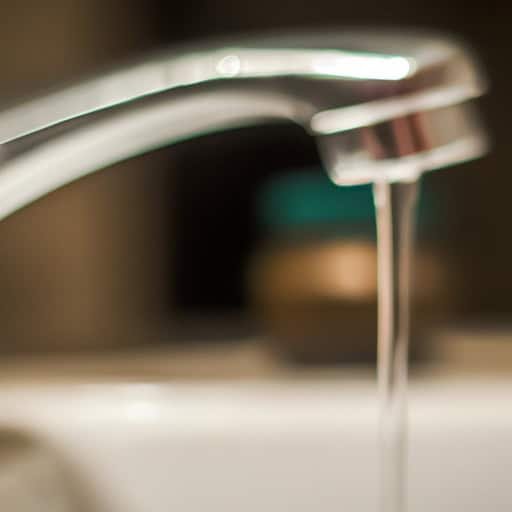Are you a homeowner relying on a well for your water supply? It’s essential to be aware of the signs that could indicate potential issues with your well water quality. Changes in the taste, odor, or appearance of your water might be red flags, as well as the presence of stains or corrosion in your plumbing fixtures. In this article, we’ll explore the signs that could point to water quality problems in your well and discuss the steps you can take to address them. So, let’s dive in and ensure your well water remains clean and safe for your household needs.

Signs of Well Water Quality Issues
Changes in Water Appearance
One of the first indicators of well water quality issues is changes in the appearance of the water. If you notice any discoloration or cloudiness in your water, it could be a sign of sediment or particles present in the water. Additionally, if you see any floating debris or unusual substances in your water, it may indicate contamination.
Unpleasant Odor
Another sign of well water quality issues is an unpleasant odor emanating from the water. If your water has a rotten egg smell, it might be due to the presence of hydrogen sulfide gas, which is commonly associated with bacterial contamination. Other types of odors, such as a musty or earthy smell, could indicate the presence of organic matter or algae growth in the well.
Strange Taste
If your well water has a strange taste, it could be a sign of water quality issues. Metallic or bitter tastes may be indicative of elevated levels of minerals such as iron or manganese. Salty or acidic tastes may suggest high levels of dissolved salts or groundwater contamination.
Staining and Discoloration
One of the more noticeable signs of well water quality issues is staining and discoloration on fixtures, sinks, or clothes after washing. Brown or red stains are commonly associated with high iron levels, while blue or green stains may be caused by elevated copper levels. These stains not only affect the aesthetic appeal of your home but can also be an indication of potential health risks.
Sediment and Particles
The presence of sediment or particles in your well water can be another warning sign of water quality issues. If you notice sand, silt, or other debris in your water, it may be an indication of a problem with the well casing or a deteriorating well screen. These particles can clog plumbing fixtures, cause damage to appliances, and affect the overall quality of your water.
Corrosion
Corrosion can be a sign of well water quality issues, particularly if you observe blue-green stains on plumbing fixtures or experience pinhole leaks in your pipes. Corrosion can be caused by the presence of corrosive water, which may contain excessive levels of dissolved minerals or chemicals. If left unaddressed, corrosion can lead to costly repairs and potential health risks.
Increased Incidence of Illness
If there is an increased incidence of illness among those using the well water, it could be a sign of water quality issues. Contaminated well water can contain harmful bacteria, viruses, or parasites that can cause gastrointestinal illnesses such as diarrhea, nausea, and stomach cramps. If you and your family members frequently experience these symptoms, it is crucial to investigate and address the potential water quality issues to safeguard your health.
Low Water Pressure
A sudden decrease in water pressure can be an indication of well water quality issues. If you notice a significant drop in water pressure when using your faucets, showerheads, or other water outlets, it may suggest a clog or blockage within the well system. Build-up of sediment, mineral deposits, or biological growth can restrict the flow of water and reduce pressure, leading to inconvenience and potential damage to your plumbing system.
Decreased Water Flow
Similar to low water pressure, a significant decrease in water flow can also be a sign of well water quality issues. If you notice a noticeable reduction in the amount of water flowing from your faucets or showerheads, it may indicate a blockage or damage within the well or distribution system. Decreased water flow can affect your daily activities, and it is important to identify and address the underlying cause promptly.
Water Testing Results
Regular water testing is vital in determining the overall quality of your well water. It allows you to identify any potential contaminants or issues that may not be apparent through visual inspection alone. By conducting comprehensive water quality tests, you can obtain accurate information about the levels of minerals, bacteria, chemicals, and other contaminants in your water. Water testing results will serve as a guide in addressing specific issues and implementing appropriate solutions.
Addressing Well Water Quality Issues
Identify the Source of the Issue
To address well water quality issues, it is crucial to identify the source of the problem. Conduct a thorough inspection of your well system, including the casing, pump, and plumbing connections. Check for any visible signs of damage, leaks, or cracks. Additionally, consider the surrounding environment and potential contaminants that may be seeping into the well. Identifying the source of the issue is the first step towards implementing effective solutions.
Implement Regular Testing
Regular water testing is essential in addressing well water quality issues. By testing your water at least once a year, you can stay informed about any changes or fluctuations in the quality of your water. This information will help you determine if any corrective measures need to be taken to maintain the safety and purity of your well water. Various testing kits are available, or you can opt for professional laboratory testing for more comprehensive results.
Proper Maintenance and Cleaning
Proper maintenance and cleaning of your well system are critical in addressing water quality issues. Regularly inspect and clean the well casing, ensuring it is free from debris or sediment build-up. Check and clean the well screen to prevent clogging. Additionally, maintain and service the pump and pressure tank as per the manufacturer’s recommendations. By practicing good maintenance habits, you can ensure the longevity of your well system and minimize the risk of contamination.
Disinfection and Chlorination
Disinfection and chlorination are effective methods for addressing bacterial contamination in well water. Chlorine-based disinfectants can help eliminate harmful bacteria, viruses, and parasites. Follow the recommended guidelines for the correct dosage and contact time to ensure effective disinfection. It is important to note that regular disinfection may be necessary, especially after heavy rainfall, flooding, or any events that may introduce contaminants into the well.
Water Filtration and Treatment Systems
Installing water filtration and treatment systems can significantly improve the quality of your well water. Depending on the specific issues identified through water testing, various filtration and treatment technologies are available. Common options include activated carbon filters, reverse osmosis systems, and UV disinfection units. Research and select the appropriate system(s) that will address your specific water quality concerns and enhance the safety and taste of your well water.
Professional Consultation and Assistance
Seeking professional consultation and assistance is recommended when dealing with complex well water quality issues. Certified well contractors, water treatment specialists, or environmental agencies have the knowledge and expertise to assess and address various water quality concerns. They can help interpret water testing results, recommend appropriate treatment options, and provide guidance in maintaining a healthy water supply.
Consider Alternative Water Sources
In some cases, considering alternative water sources may be necessary to address persistent well water quality issues. Utilizing a municipal water supply, installing a rainwater harvesting system, or exploring the option of drilling a new well in a different location are all potential alternatives. Consult with experts and weigh the pros and cons of each option to make an informed decision that best suits your specific situation.
Educate Yourself and Others
Take the initiative to educate yourself and others about well water quality issues. Familiarize yourself with the potential contaminants, their sources, and the associated health risks. Stay informed about current regulations and guidelines for well water testing and treatment. By sharing your knowledge with family, friends, and neighbors, you can help raise awareness about the importance of well water quality and encourage others to take proactive measures.
Monitor and Maintain Water Source
Even after implementing necessary measures to address well water quality issues, continuous monitoring and maintenance are essential. Regularly check for any changes in water appearance, odor, or taste. Keep records of water testing results and adhere to scheduled maintenance tasks. By closely monitoring the condition of your well and water supply, you can promptly address any emerging issues and ensure the ongoing safety and quality of your well water.
Consider Well Replacement
In some cases, well replacement may be the most viable solution to persistent and severe well water quality issues. If your well is old, structurally compromised, or situated in an area with known groundwater contamination, replacing the well may be necessary. Consult with a well contractor to assess the feasibility and potential benefits of well replacement in addressing your specific water quality concerns.
By being proactive and addressing well water quality issues, you can maintain a safe and reliable water supply for your household. Regular testing, proper maintenance, and the implementation of appropriate treatment methods will help safeguard your health and ensure the quality of your well water. Remember, it is essential to seek professional advice when dealing with complex issues or significant water quality concerns. With careful attention and informed decisions, you can enjoy clean, healthy water from your well for years to come.


